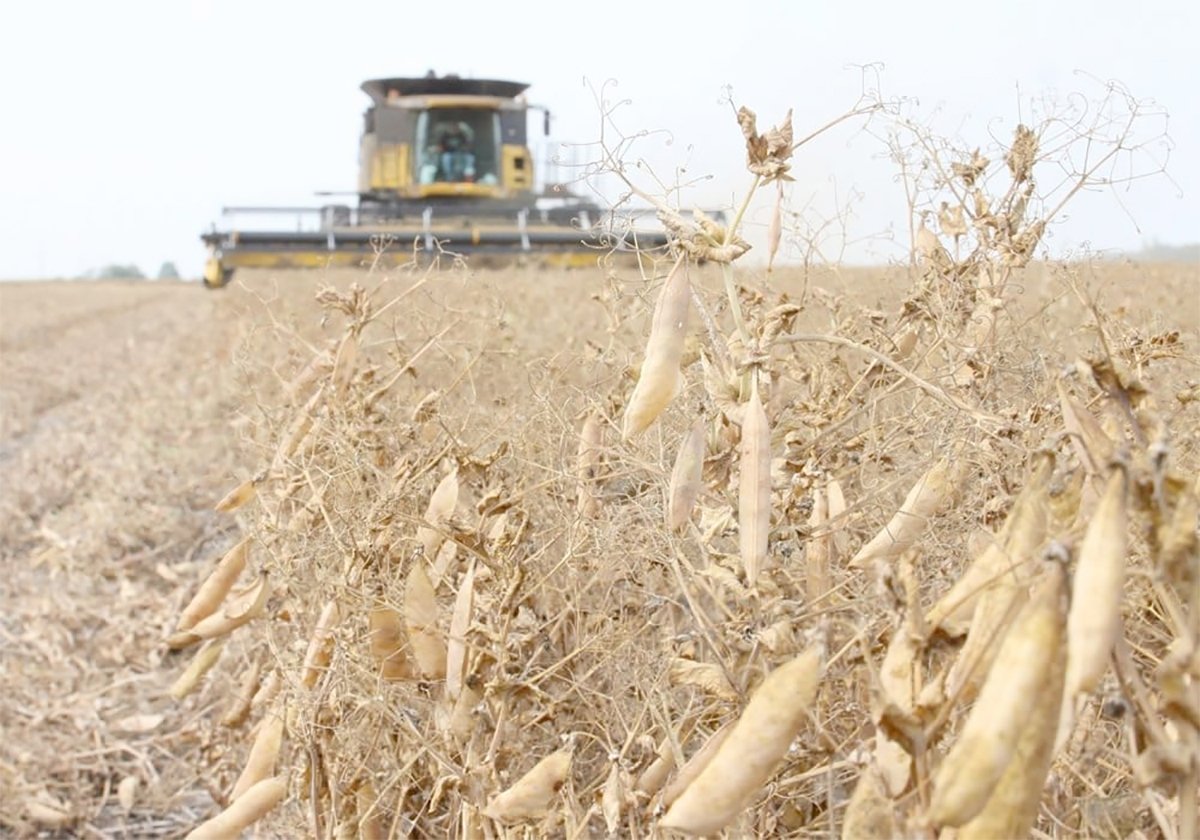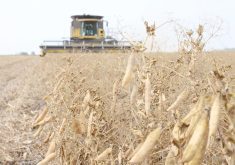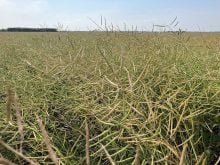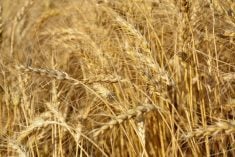Les Bohrson has no doubt more corn will be grown in Saskatchewan
someday.
“It’s just a better feed.”
Bohrson, a senior agrologist with Saskatchewan Agriculture who works in
irrigation development, said about 200 Saskatchewan growers seeded
10,000 acres of corn this year.
The Irrigation Crop Diversification Corp., or ICDC, has been collecting
data for the last three years from seven of them to offer comparisons.
Most intend to use the corn for silage rather than as grain. They
Read Also

Chinese, Indian tariffs take toll on pea prices
The disruption of pea exports from Canada’s largest customers will likely result in slow pea exports for the remainder of the crop year.
primarily grow varieties offered by Pioneer Hi-Bred and DeKalb.
They grow varieties that require as few as 2,100 corn heat units to as
many as 2,800.
Samples were collected three times: around the first week in August;
the first week in September; and when the silage was in the bag.
Leaf tissue analysis looked at nutrients to determine if there was
adequate fertility.
“We would like to see all of our fields with tassels fully extended
dropping pollen … at silk (stage) on the first of August,” Bohrson
said.
“That would leave us sufficient numbers of days between Aug. 1 and
mid-September to reach the optimum amount of starch or energy.”
The successful growth of the plant in early summer determines its
ability to finish a cob, he said.
The September examination looks at cob development and available
energy.
Bohrson said killing frosts by Sept. 1 are possible in Saskatchewan,
and growers need to know if the plant would be mature enough and have
sufficient energy to cope.
The results from 48 fields of the 2002 crop will be available in about
a month, Bohrson said.
The results are ranked, but Bohrson said the goal is not to determine
which grower is doing the best.
“We’re saying, out of 48 sites, what does number 24 look like,” he
said. “If you’re a new grower, your objective is to get to the middle.”
Rick Swenson, who farms at Baildon southeast of Moose Jaw, has been
growing corn for the last three years and is working with ICDC.
He wanted to try corn 20 years ago when he and his father began
irrigating their land for their seed farm. They had leaf-cutter bees,
and he said he knew that the same heat that was good for bees would be
good for corn.
He was also intrigued by corn silage yield.
Other silage crops yield as much as eight tonnes per acre under dryland
farming.
This year, Swenson is hoping for 15 tonnes of corn silage per acre
under irrigation.
“I see no reason, with the heat units we have here, we can’t push it to
20 tonnes,” he said.
He grows corn for silage on contract to a local feedlot. He will also
graze his cattle on some this winter, as he has for the past two years.
“The cost per cow per day is half the cost of yarding my cows and
feeding them hay,” Swenson said.
Last year he turned 85 cows and five calves out on 21 acres of corn
Dec. 1. They grazed until Feb. 15.
Swenson’s crop this year performed well and some varieties did come in
at the top of the ICDC rankings in September.
Last year’s crop topped 3.35 metres; this year’s is slightly shorter.
Corn seeded on chickpea stubble did not do as well as the rest of the
crop, although neither he nor Bohrson are sure why.
Bohrson said corn does well following potatoes.
“Basically what you’ve got is summerfallow with a whole lot of residual
fertilizer.”
He said corn is a high-value crop that should be grown on the best
land. Irrigation is a must.
In Saskatchewan, areas around Lake Diefenbaker, Leader and Moose Jaw
are proving to have enough heat units.
He added that farmers who can make money growing barley can make “a
whole lot” of money growing corn.
And as the province’s beef feeding industry grows, corn and corn silage
will become more prominent.















